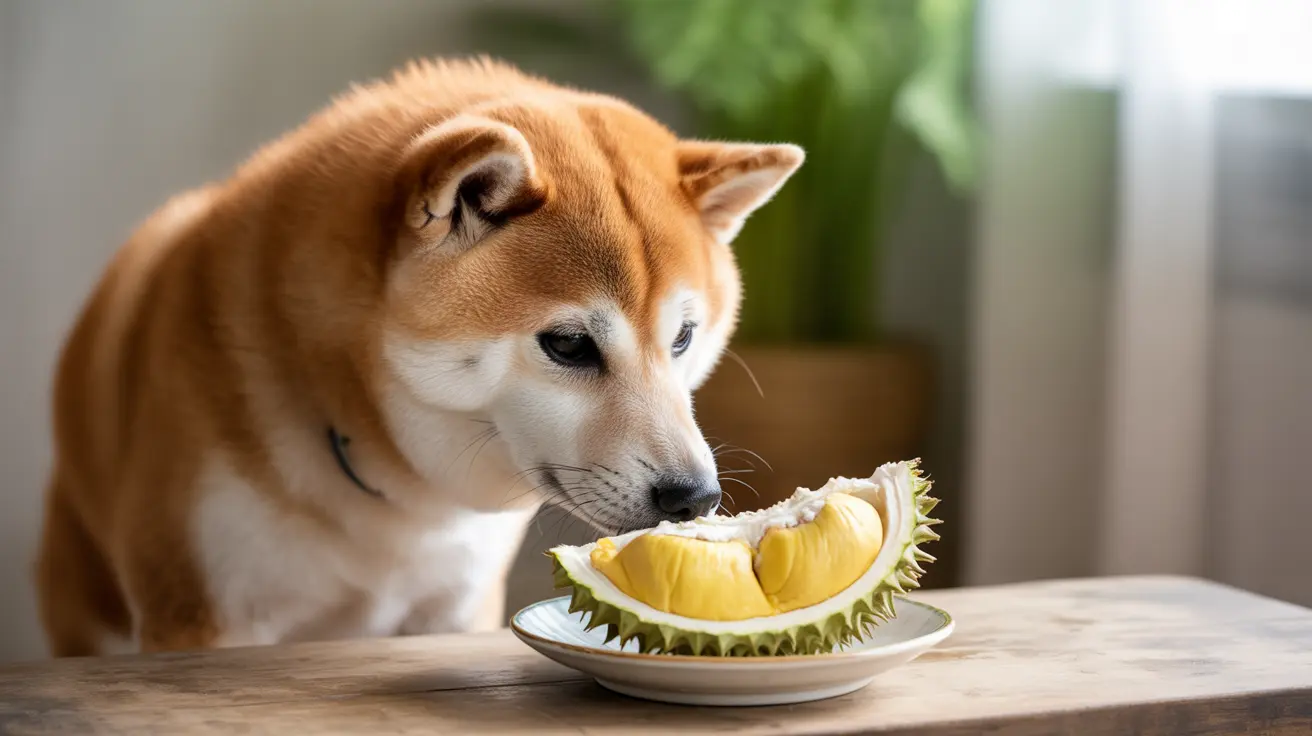Understanding Durian and Its Components
Durian is a large, spiky fruit known for its strong aroma and creamy flesh. The fruit consists of three main parts:
- The tough, thorny outer husk
- The soft, custard-like flesh
- Large seeds scattered throughout the flesh
While the flesh contains beneficial nutrients like vitamins B, C, and potassium, the seeds and skin can be dangerous for dogs and should never be consumed.
Potential Health Risks of Durian for Dogs
Physical Hazards
The most immediate dangers come from the fruit's physical structure:
- Sharp, spiky exterior that can cause oral injuries
- Large seeds that pose serious choking hazards
- Tough skin that can cause intestinal blockages if swallowed
Digestive Concerns
Even the edible flesh can cause problems:
- High fat content may trigger pancreatitis
- Excessive sugar can lead to weight gain and diabetes
- Rich nature of the fruit often causes stomach upset
- Potential for severe digestive disturbances
Safe Feeding Guidelines
If you decide to offer durian to your dog, follow these strict guidelines:
- Remove all seeds and skin completely
- Offer only tiny amounts of flesh (less than a tablespoon for medium-sized dogs)
- Introduce slowly and watch for adverse reactions
- Never feed to dogs with existing health conditions
- Keep as an occasional treat only
Warning Signs to Watch For
Monitor your dog closely after consuming durian. Contact your veterinarian immediately if you notice:
- Vomiting or diarrhea
- Lethargy or weakness
- Abdominal pain or bloating
- Loss of appetite
- Difficulty breathing
- Signs of allergic reactions
Safer Fruit Alternatives for Dogs
Instead of durian, consider these veterinarian-approved fruit options:
- Apples (without seeds)
- Watermelon (seedless)
- Blueberries
- Banana slices
- Fresh strawberries
Frequently Asked Questions
Can dogs safely eat durian fruit, and what precautions should I take before feeding it?
Dogs can eat small amounts of durian flesh only, with extreme caution. Remove all seeds and skin, and only offer tiny portions. Always consult your veterinarian first and monitor your dog closely for adverse reactions.
What are the health risks if my dog eats durian seeds or skin?
Durian seeds are toxic to dogs and can cause choking. The skin can cause injuries and intestinal blockages. If your dog consumes either, seek immediate veterinary care.
How much durian is safe for my dog, and how often can I offer it?
If offering durian, limit portions to less than a tablespoon for medium-sized dogs, no more than once a month. Many veterinarians recommend avoiding it entirely due to the risks.
What symptoms should I watch for if my dog eats durian and might be having an adverse reaction?
Watch for vomiting, diarrhea, lethargy, abdominal pain, difficulty breathing, or signs of allergic reactions. Contact your veterinarian immediately if these symptoms occur.
Are there safer fruit alternatives than durian that I can give my dog as treats?
Yes, safer alternatives include apples (without seeds), watermelon (seedless), blueberries, and bananas. These fruits are lower in fat and sugar and pose fewer risks.
Conclusion
While dogs can technically eat small amounts of durian flesh, the risks generally outweigh any potential benefits. With numerous safer fruit alternatives available, it's best to choose other treats for your canine companion. If you do decide to offer durian, exercise extreme caution and always consult with your veterinarian first.






